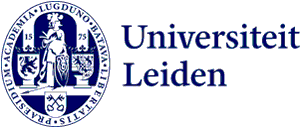73 search results for “biodiversity” in the Public website
-
Biodiversity Research & Education Program Suriname (BioREPS)
How can we monitor and protect biological and cultural diversity in Suriname best? What can we learn from local knowledge and customs associated with biodiversity? How can we understand current species, acoustical, behavioural, and ecological diversity from an evolutionary perspective? Can we predict…
-
Urban green infrastructure for biodiversity and ecosystem services
Urbanisation is steadily increasing with estimates expecting that 68% of the global population will live in cities by 2050. To accommodate the rural to urban transition, large quantities of land are transformed from natural to urban lands.
-
COMBINED - increasing biodiversity and climate change resilience in Dutch landscapes
How can we effectively increase biodiversity and climate resilience in Dutch cities from an ecological, societal and governmental perspective?
-
global regionalized impacts of eutrophication on freshwater fish biodiversity
Freshwater biodiversity has been threatened by eutrophication due to excessive nutrients in the environment. Releasing the freshwater species from such pressures requires efforts from industry and manufacturers to avoid emissions to vulnerable and high-risk regions.
-
Remote (sensing) functional biodiversity: exploring drivers of trait variation and spectral variability in the Arctic
Globally and regionally, biodiversity is declining and there are shifts in species’ occurrences and functional traits.
-
Digging for data: the rise and fall of a Miocene mammal biodiversity hotspot in the Vallès-Penedès (Catalonia, Spain)
The Vallesian, 11.1-9 Ma, was a special time in the Vallès-Penedes basin near Barcelona, where a biodiversity hotspot existed. Europe had a subtropical climate, with rhinos, forest giraffes, lions, hyenas, flying squirrels and primates.
-
 Luuk Siewers
Luuk SiewersFaculty of Science
-
30 million for Dutch Center for Biodiversity
Universiteit Leiden in cooperation with Naturalis, the University of Amsterdam (UvA) and University Wageningen is foundig a center for biodiversity. They will receive 30 million euros from The Ministry of Education, Culture and Science (OCW).
-
 Konstantinos Georgopoulos
Konstantinos GeorgopoulosFaculty of Science
-
Measuring species traits for biodiversity policy goals
An international team including Peter van Bodegom shows how trait variability can be incorporated in Essential Biodiversity Variables to allow monitoring how organisms respond to global change. They published their results in the journal Nature Ecology & Evolution.
-
The resilience of tropical intertidal seagrass meadows, grazed by dugongs, and the impact of anthropogenic stressors
Seagrass is a marine flowering plant with special adaptations to coastal and marine environments, playing a crucial role in providing a wide range of ecosystem services.
-
Home Ecologics – Dutch multispecies homes
How do humans, non-humans and their interactions and relations shape the home as ecological and social space?
-
Assessing the biodiversity on an ecodesign landscape in the Oosterschelde
On December 16th 23 students of the Institute of Environmental Sciences of Leiden University took part of the first total species inventory to assess the effectiveness of an underwater landscape that was build in March 2003 to restore the biodiversity in an area where the environment was destroyed by…
-
What we can learn from hi-tech nature
Biodiversity in the Netherlands is having a tough time. Professor of Natural Capital Koos Biesmeijer combines research with practical advice: from the greening of industrial parks to solutions inspired by hi-tech nature. Inaugural lecture 9 March.
-
Tweerichtingsverkeer tussen mens en biodiversiteit
Inaugural address of Prof.dr.ir. Peter van Bodegom
-
 Ellen Cieraad
Ellen CieraadFaculty of Science
-
Labs and ‘pavement plants’: Leiden University’s contributions to biodiversity
Through various initiatives, Leiden University is trying to make people aware of the importance of biodiversity: the cultivation of a wide variety of micro-organisms, animals and plant species. This is important because in the Netherlands biodiversity has declined from about 40 percent in 1900 to about…
-
Species Literacy: The perception and cultural portrayal of animals
In his dissertation Michiel Hooykaas outlines the results of six empirical research projects focused at biodiversity awareness in the Netherlands, specifically people’s knowledge about animals.
-
 Laura Scherer
Laura SchererFaculty of Science
-
Nature's Nether Regions
What the Sex Lives of Bugs, Birds, and Beasts Tell Us About Evolution, Biodiversity, and Ourselves, Menno Schilthuizen reports from the front lines of evolutionary biology, on a quest to make sense of the origins, workings and evolution of our and other species’ reproductive selves.
-
CurveBend
CurveBend project aims to study the restauration of biodiversity in livestock landscapes through collective action, practical solutions, and research on ecological knowledge co-creation.
-
Leideners find more than 2,000 species in urban biodiversity inventory
Around 1,300 Leideners found 2,265 species during the Expeditie Stadsnutuur urban biodiversity inventory. ‘It’s been a huge success’, says scientific coordinator Frederic Lens.
-
 Niels Raes
Niels RaesFaculty of Science
-
 Marvin Groen
Marvin GroenFaculty of Science
-
 Fleur van Duin
Fleur van DuinFaculty of Science
-
 Jennifer Anderson
Jennifer AndersonFaculty of Science
-
Microbial communities in Pampa soils; impact of land use changes, soil type and climatic conditions
Promotor: J.A. van Veen, Co-promotor: E.E. Kuramae
-
 Hazal Kandemir
Hazal KandemirFaculty of Science
-
 Kevin Groen
Kevin GroenFaculty of Science
-
 Caitlin Black
Caitlin BlackFaculty of Science
-
 Suzanne van den Bosch
Suzanne van den BoschFaculty of Science
-
 Michiel Hooykaas
Michiel HooykaasFaculty of Science
-
 Geert de Snoo
Geert de SnooFaculty of Science
-
 Jens van Bijsterveld
Jens van BijsterveldFaculty of Science
-
 Ruben Huele
Ruben HueleFaculty of Science
-
Silva Nova – Restoring soil biology and soil functions to gain multiple benefits in new forests
We will study how inoculation of former arable land with soil (including the microbiome, soil fauna and seeds/rhizomes of ground flora) from old forests along with planting targeted tree species mixtures will improve productivity and more rapidly restore forest-adapted communities and ulttimately result…
-
DNAmarkerpoint
The main purpose of DNAmarkerpoint is to better understand the ecology, evolution and biodiversity through the study of ancient- and modern DNA.
-
 Emily Strange
Emily StrangeFaculty of Science
-
Environmental Biology
This research programme aims to increase the scientific understanding of how current and emerging anthropogenic threats affect biodiversity and ecosystem services to facilitate strategic management of natural resources. To this end, we address urgent challenges in relation to the mechanisms involved…
-
 Kees Musters
Kees MustersFaculty of Science
-
Stoepplantjes (Pavement plants)
In our lives we often have little attention or appreciation for plants, let alone the ones we commonly call weeds. This inattention for plants has been described as plant blindness. The Stoepplantjes project aspires to decrease plant blindness by changing the image of weeds and using citizen science.…
-
 Merlijn van Weerd
Merlijn van WeerdFaculty of Science
-
Diversity and distribution of octocorals and scleractinians in the Persian Gulf region
Promotor: E. Gittenberger, Co-promotores: B.W. Hoeksema; L.P. van Ofwegen
-
Integrative taxonomy of araneomorph spiders: Breathing new life into an old science
Taxonomy as a science has accumulated data and knowledge for more than 250 years.
-
Patterns of coral species richness and reef connectivity in Malaysia
Promotor: E. Gittenberger, Co-promotor: B.W. Hoeksema
-
If we do nothing, more plants will go extinct
A wide range of plant species is essential to our earth because of the different materials and foods these plants provide. But plant diversity has decreased drastically in recent decades. PhD candidate Kaixuan Pan explains what we can do to increase it once again.
-
Management implications for invertebrate assemblages in the Midwest American agricultural landscape
Promotor: G.R. de Snoo Co-promotor: C.J.M. Musters
-
Satellite remote sensing of plant functional diversity
Biodiversity enables ecosystems to thrive through the synergy of functional differences among organisms. While human well-being strongly depends on biodiversity-driven ecosystem services, human actions are also at the root of current unprecedented biodiversity declines.
-
The tension between nature conservation and economic valuation of ecosystem services
Promotores: G.R. de Snoo, W.T. de Groot, Co-promotor: C.J.M. Musters
-
Evolutionary diversification of coral-dwelling gall crabs (Cryptochiridae)
Promotor: Prof.dr. E Gittenberger, Co-Promotores: C.H.J.M. Fransen, Dr. B.W. Hoeksema
